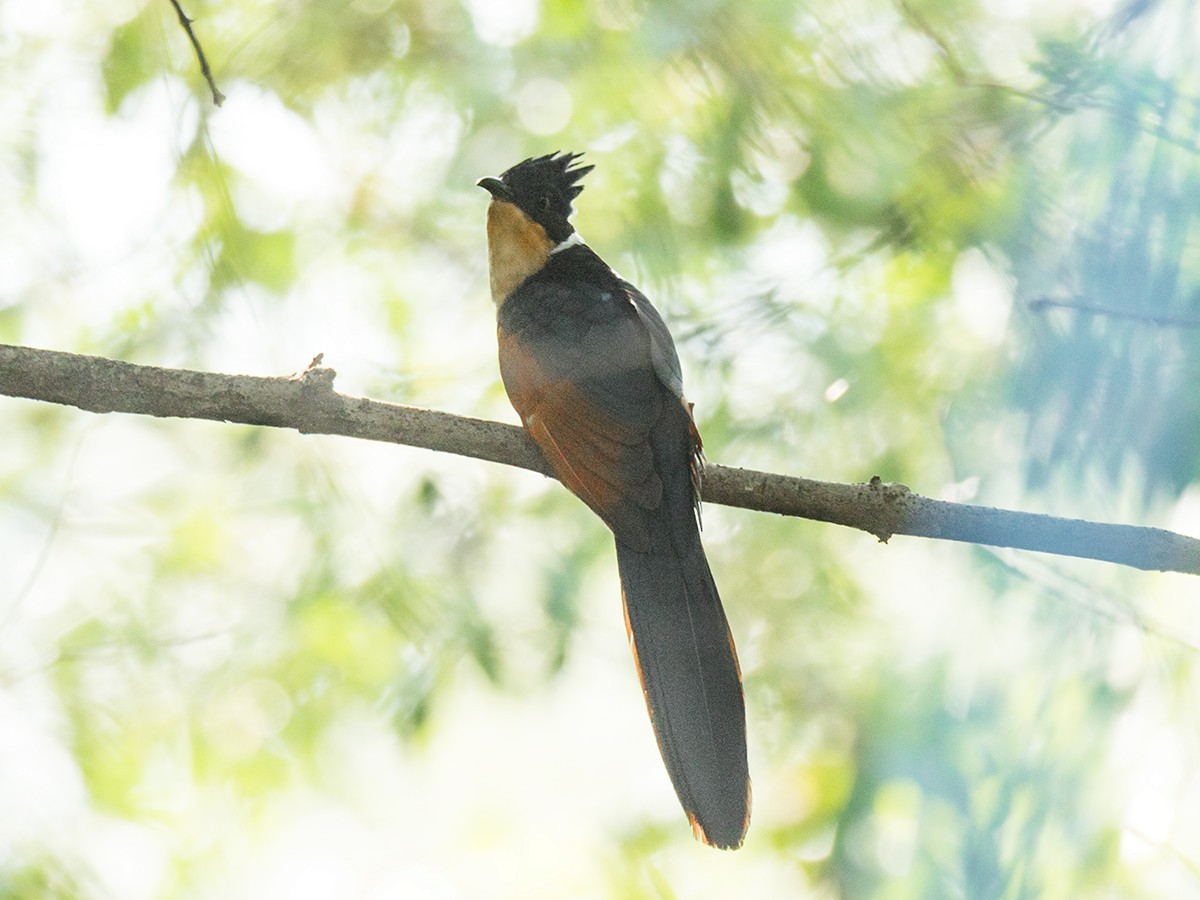Chestnut-winged Cuckoo
A species of Old world crested cuckoos Scientific name : Clamator coromandus Genus : Old world crested cuckoos
Chestnut-winged Cuckoo, A species of Old world crested cuckoos
Botanical name: Clamator coromandus
Genus: Old world crested cuckoos
Content
Description General Info
 Photo By Wich'yanan (Jay) Limparungpatthanakij
Photo By Wich'yanan (Jay) Limparungpatthanakij Description
This dark and crested cuckoo has chestnut wings, a glossy black crest and a graduated tail (the feathers shortening in steps from the center outwards) whose terminal edges are white and inconspicuous unlike the white tips of the Jacobin cuckoo which is found in parts of its range. The black capping on the head is broken from black of the back by a white collar that extends to the sides of the neck. The lower parts are rufous turning to dark grey towards the vent. Young birds are dusky with a scaly appearance to the wing feathers. 
Size
23 - 41 cm
Nest Placement
Tree
Feeding Habits
Chestnut-winged Cuckoo primarily eats large insects like caterpillars and beetles, meticulous in removing indigestible parts before consumption. Occasionally feeds on spiders and small fruits, often foraging within mixed-species flocks.
Habitat
Chestnut-winged Cuckoo inhabits a variety of environments, including wooded areas with dense undergrowth, swamp forests, riverine woodlands, and mangroves. They also adapt to human-modified landscapes such as plantations, cultivated lands, and villages. During winter and migration, chestnut-winged Cuckoo favors open habitats like lowland forests and scrublands.
Dite type
Omnivorous
General Info
Feeding Habits
Bird food type
Behavior
This cuckoo sometimes joins mixed species foraging flocks and is usually seen singly. The breeding season is in summer and it is said to lay its eggs mainly in the nest of Garrulax laughingthrushes, especially G. monileger and G. pectoralis. The eggs are very spherical. The calls include fluty twin-notes repeated with short intervals. 
Distribution Area
The species is found from the western Himalayas to the eastern Himalayas and extends into Southeast Asia. It has been recorded from India, Nepal, China, Indonesia, Laos, Bhutan, Bangladesh, Cambodia, Thailand, Myanmar, Malaysia, Vietnam, Sri Lanka and the Philippines. Some populations may be non-migratory. During migration in India, it moves along the Eastern Ghats in its southward migration with exhausted individuals often being discovered in the vicinity of homes. In mid-October, they are found in numbers at Point Calimere, possibly into Sri Lanka. Some appear to winter in the Western Ghats. 

 Photo By Wich'yanan (Jay) Limparungpatthanakij
Photo By Wich'yanan (Jay) Limparungpatthanakij Scientific Classification
Phylum
Chordates Class
Birds Order
Cuckoos and Relatives Family
Cuckoos Species
Chestnut-winged Cuckoo